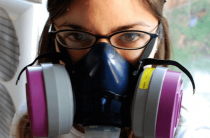Allergy is one of the most rapidly progressive diseases in the modern world. This is due to the way of life of modern man. The environment is deteriorating, more and more additives are being used in the food industry, which are replacing natural products, a large number of synthetic products in everyday life, etc.
Being a hereditary disease, it is transmitted from parent to child in 4 out of 10 cases. In couples where both parents are allergic, this ratio is 8 out of 10. The numbers are really not encouraging. However, it is encouraging that in any case, there is an opportunity to prevent such diseases and alleviate their course. To do this, it is enough to adhere to certain rules that will help you not only avoid unpleasant manifestations, but also add health and longevity to you.
What is a hypoallergenic diet?
One such rule is a hypoallergenic diet. It is based on the fact that there are certain products, the components of which, when ingested, increase allergic symptoms. All of you have probably heard about what happens if you eat too much chocolate or strawberries. Even if a person is not specifically allergic to these foods, he may develop symptoms typical of an allergy. The most common is the so-called "scrofula", that is, the formation of blisters with a yellowing crust, behind the ears.
And so, how does a person who is not allergic to chocolate get allergy symptoms with obvious abuse of this product? The thing is that in chocolate a substance is formed - histamine. Being the main hormone responsible for allergic reactions in the body, it enters the body of a person who eats an excessive amount of chocolate in large quantities and begins to have a biological effect, that is, it causes allergic reactions. Histamine is also found in cheeses that have been aged for a long time, such as parmesan or varieties with so-called “noble mold”.
And so, why is such a reaction to these products not an allergy? Allergies occur in response to an allergen that binds to antibodies and triggers an immune response complex that results in an allergic reaction. That is, we are talking about the pathological sensitivity of the body to safe substances. Well, a large amount of chocolate causes the same symptoms, only in a different way. And in general, this reaction to the use of a large amount of a product with allergenic properties is more than normal, like vomiting during intoxication with a large amount of alcohol.
Now imagine that we are not talking about a healthy person, but about an allergic person whose immune response is already in full swing. For him, even a moderate amount of a product with allergenic potential will lead to a significant increase in symptoms. That is why, these people primarily need to adhere to a hypoallergenic diet, but not only allergy sufferers are at risk ...
Who else needs to follow a hypoallergenic diet:
- People with hypersensitivity to products with allergenic potential;
- Pregnant women;
- breastfeeding mothers;
- Children (before preschool age)
This does not mean that each of this category of people must refuse these products forever. So, for example, allergy sufferers are advised to follow a hypoallergenic diet during contact with an allergen (for example, during the flowering of an allergen plant, if there is an allergy to pollen); pregnant women and nursing mothers - from the beginning of pregnancy to the end of the feeding period, etc.
However, for people with an acute form of intolerance to certain foods, it is better to permanently eliminate them from the diet. Moreover, this should be taken with great responsibility, because for this form of intolerance, all variants of the development of allergic symptoms are possible, up to Quincke's edema or the state of anaphylaxis, which without timely competent medical care can lead to death.
Foods prohibited on a hypoallergenic diet
And so, what foods can provoke allergic reactions:
- Chocolate, cocoa, coffee;
- Citrus fruit;
- Tomatoes;
- Strawberries, raspberries, strawberries;
- egg yolks;
- Long-aged cheeses;
- Fish, seafood (shellfish and crustaceans);
- Mustard, horseradish, hot peppers;
- Products containing preservatives, synthetic dyes and flavor enhancers;
- Grapefruit;
- Honey, honeycomb, propolis, royal jelly, bee pollen
Such strict exceptions apply to pregnant women, nursing mothers and allergy sufferers during an exacerbation. In other cases, a person proceeds primarily from his observations, and of course, the testimony of a doctor, in cases where necessary.
Hypoallergenic diet for children
And so, first of all, it must be said that the child's body, being in the stage of intensive growth, needs an increased amount of nutrients. Therefore, the diet for a child should primarily consist of high-quality food of natural origin, which is rich in all the necessary micro and macro nutrients.
As for the exclusion of products, this must be provided to a specialist and only in case of real need. Moreover, the exclusion of an allergenic product is carried out with a mandatory replacement for a product with similar useful properties, but devoid of allergenic properties. On your own, you can only replace non-natural products containing dyes, preservatives and other synthetic substances with their natural counterparts. So, for example, canned fish can be replaced with baked fish.
Hypoallergenic diet for pregnant and lactating
During pregnancy or lactation, it is recommended to limit the intake of foods that are prone to cause allergic reactions. This is done in order to prevent an increase in allergy symptoms in the mother, or in the child if one of the parents has allergies. But again, given the special need of the mother for nutrients, during the period when a woman is pregnant or breastfeeding, introducing a diet based on food restrictions is the prerogative of your doctor alone.
Here again, it is important to follow a healthy approach to nutrition and, if possible, avoid products containing chemical preservatives, flavor enhancers, acid stabilizers, sweeteners, etc. as much as possible. If a child has a food allergy, then the mother will be required to exclude the product that causes the child's allergy during feeding. This is due to the fact that many allergy-causing substances are able to penetrate the baby's body, along with breast milk.
The basis of the diet for a pregnant and nursing mother should be natural products: a variety of cereals; lean rabbit meat; turkey, chicken fillet; non-hypoallergenic fruits and vegetables, berries; pasta and bread products from durum wheat, fermented milk products of low fat content. It is also desirable to adhere to a diet consisting of products typical for the region in which you live. Our body is predisposed to such products in the best possible way.
What about foods that should be removed or limited, these include: fatty, fried foods; hypoallergenic products; seasonings; dishes containing artificial ingredients typical of the modern food industry (mayonnaise, ketchup, canned food, chocolate bars, chips, etc.).
A separate word must be said about alcohol. In general, this product is harmful in one way or another for everyone and everyone. Even with reasonable use, it has an adverse effect on the cardiovascular, nervous system, kidneys and liver of a person. But since, in this article we are talking about allergies, it is necessary to say about one more property that is not so obvious. Alcohol aggravates the course of allergies and enhances allergic reactions, therefore, it is highly discouraged for allergy sufferers during an exacerbation. Well, a complete ban on alcohol for pregnant and lactating women should be obvious anyway. All this is true for smoking.
Hypoallergenic diet for allergic diseases
Allergy sufferers, during the period of manifestation of allergic symptoms, the best option would be to abandon foods that exacerbate allergy symptoms. After all, if they have a potentiating effect on allergy symptoms, this will contribute to the emergence of new symptoms and the transition of the old one to a more severe form. The use of products with allergenic potential during the underlying disease significantly complicates the treatment.
Treatment, in this case, is subject to correction by the attending physician, based on data on the patient's condition, after contact with a food factor that aggravates the symptoms.
Symptoms of allergic reactions
Allergy manifestations and exposure to products with allergenic potential are indistinguishable from each other. The most typical symptoms of exposure to a product that provokes allergic reactions are:
- Dermatological manifestations. This symptom complex is characterized by a variety of changes on the surface of the skin that are noted after exposure to a product with allergenic potential, these include: redness of the skin, itching, peeling, rash. These manifestations can be of different localization, up to the fact that they are located throughout the body.
- Allergic rhinitis. Although it is more characteristic of an allergy to dust or plant pollen, it can nevertheless be observed when exposed to certain foods. It is also accompanied by swelling of the nose, caused by the expansion of the vessels of the nasopharynx and frequent sneezing.
- General deterioration of health: weakness, fatigue, drowsiness, there may be an increase in temperature;
- The development of asthmatic symptoms, Quincke's edema or anaphylactic shock. These are the most severe forms of an allergic reaction and require immediate medical attention.
Treatment with a hypoallergenic diet
In general, treatment for intolerance to products with an allergenic effect and, in fact, allergies, is the same. This is due to the fact that the treatment is mainly symptomatic, acting solely on the removal of the symptoms of an allergic reaction. Measures taken to treat food intolerance include:
- Exclusions of products that have an allergenic potential for the patient. This is the so-called “barrier therapy”, which has the maximum therapeutic potential, in terms of benefit-safety ratio, is relevant both for allergies and food intolerance. Fortunately, food allergies and intolerances are easier to deal with than many other types of allergic reactions.
- The exclusion of tobacco and alcohol, as products that enhance the course of an allergic reaction;
- The use of antihistamines to relieve allergy symptoms;
- The use of corticosteroid drugs in injectable form and in the form of ointments (creams, gels), for local use;
- The use of anti-asthmatic drugs to relieve symptoms of bronchial asthma;
- The use of emergency aid (adrenaline, prednisolone, tavegil, etc.) for Quincke's edema or anaphylactic shock.
Remember that food intolerance can significantly complicate the life of the patient and even pose a threat of developing serious complications, no less than an allergy. Therefore, when this disorder is detected, all precautions must be observed, with all care.
Naturally, only a competent specialist has the right to make a diagnosis and prescribe medications. We remind you that self-diagnosis and self-treatment are extremely unsafe for health, and sometimes for life itself.















